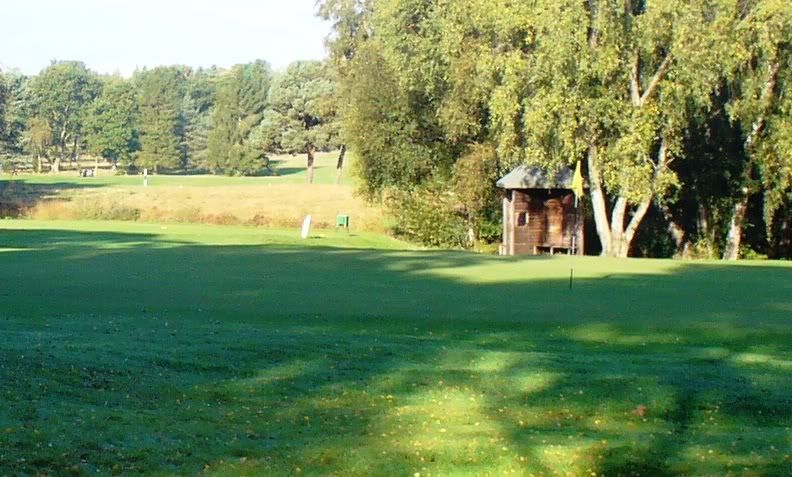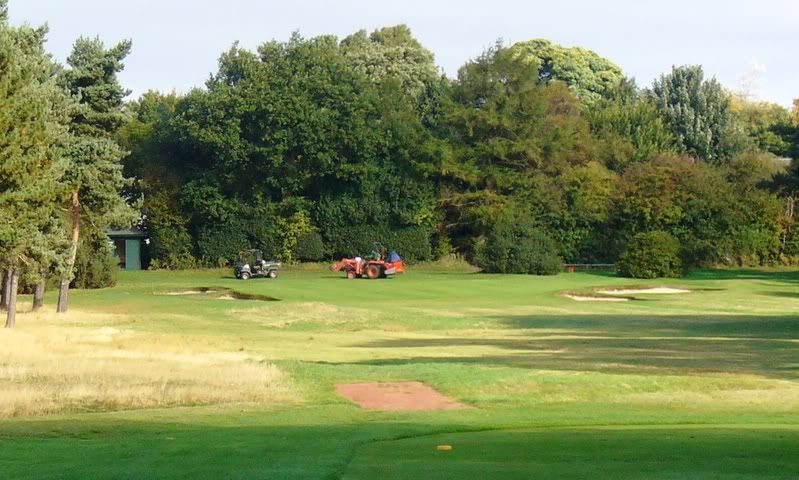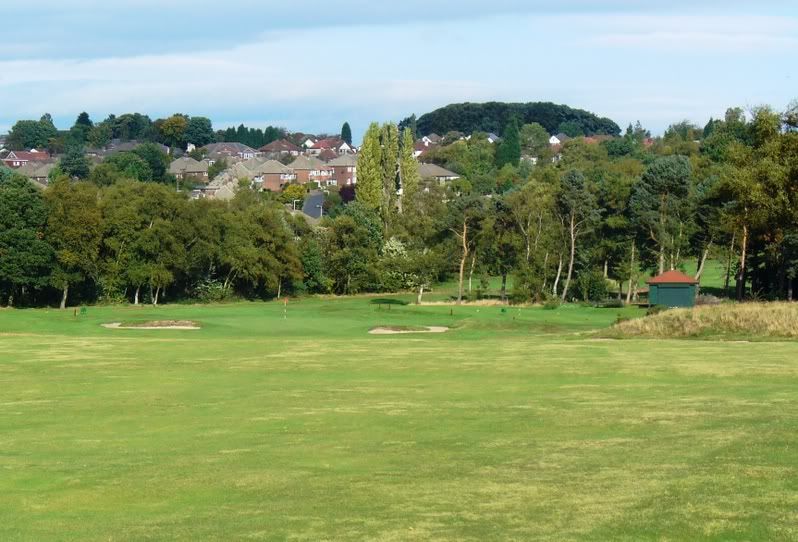On the crossed holes thread, Tommy Nacaratto asked (in reference to my photo of #5 tee crossing #4 green at Moortown in Leeds, England) ...
' James,
Are those shelters the same original shelters from when the course opened? Distinct in my memory is one of the same looking structures in the image of the Gilbralter Hole from the early 1920's. (It's located behind the green if memory serves me right)'
Whilst I don't know, they certainly look too new to be nearly 100 years old. However, I thought I'd post some photos of the shelter facilities at Moortown, as a start to a thread on 'hidden' shelter facilities on a golf course. There may be others, but here are three at Moortown. If I find the image that Tommy talked off, I'll post that (I can't recall a shelter at the back of today's Gibralter green).
The Moortown facilities by #4 green seem to have the quartering internal fence which ensures protection from the rain and weather no matter which direction the wind blows. The style of shelter varies from hole to hole, some in bleached timber, others in Brunswick Green. I think the shed by the Gibralter 'node' (it is the home of the #10, #13 and #15 tees as well as the preceding holes' greens) can be used as a 'half-way house' as well as shelter.
The first photo is the shed by the #4 green/#5 tee.

The second photo is of the shed by #16 tee which is behind #8 green (the long uphill par 3, with a green with more movement going on than a newly-wed bride).

The last two photos are of the halfway house by the Gibralter tee (#10). Gibralter is played from next to the hut to the green being renovated (top right). To the right is the red flag of #12 green and #13 tee, to the left of Gibralter is #9 green (the yellow flag).

The last picture is looking down on #12 green, with the gibralter tee (#10) by the hut.

James B